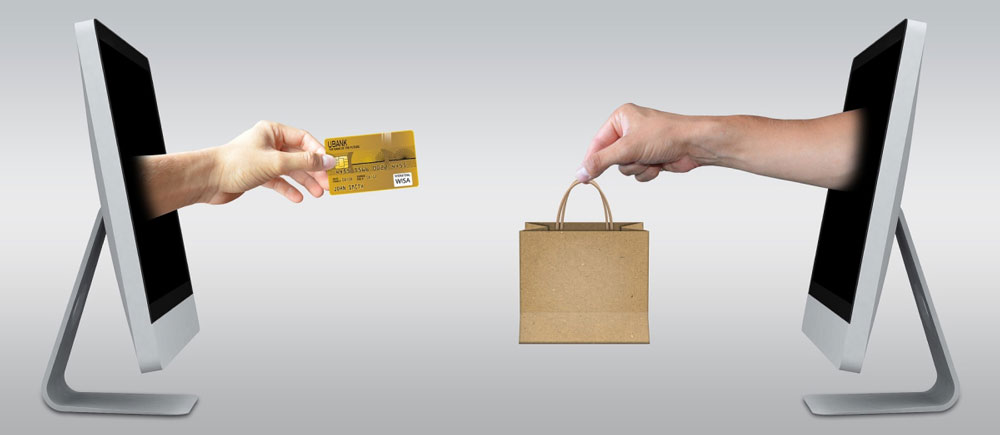
Growth-oriented businesses are usually driven by sales. Various departments within the business work together to create profit-oriented strategies. Tactics like logistics, e-commerce, and digital marketing are used together to enhance the consumer experience, and a smooth sales funnel means more customers and, consequently, increased revenue.
A crucial statistic that numerous salespeople forget to account for is the customer retention rate. It’s easy to get wrapped up in new customer acquisition and disregard important factors like existing customer loyalty. This is problematic because the key to success for any business, especially in the first five years, is to increase your customer retention rate.
What is Customer Retention?
Customer retention is a key performance indicator (KPI) that measures how loyal a business’ consumers are. This reflects the brand’s ability to acquire and retain valuable customers over some period of time. The metric can help salespeople in creating accurate sales forecasts by measuring customer engagement and satisfaction.
A high customer retention rate demonstrates that the business has been consistent with its values and delivers on its brand promises. If a brand’s retention rate is on the low end, it might make a profit over the short term but aren’t likely to continue this momentum for much longer. Low customer retention can kill a brand’s growth strategy, whereas strong customer retention increases conversions.
It’s crucial for a business to focus on its Customer Experience Marketing (CEM) in the first five years post-launch. Marketing professionals combine the customer retention metric with a detailed cohort analysis to work out any kinks in their sales funnel. This constant feedback loop can help them increase their base of loyal customers and break even earlier than expected. Let’s take a closer look at why customer retention is important for businesses.

Why is Customer Retention Important?
According to a report by author and marketing influencer Neil Patel, American businesses have lost approximately $83 billion because of poor customer retention rates. This is a staggering number that reflects the importance of this tricky KPI. A Sixads report shows that loyal consumers are likely to spend 67% more than newly acquired customers, meaning high customer retention rates are essential for a business that wants to see consistent long-term growth.
It’s imperative for a business to maintain a clear focus on customer retention in the first five years because the cost of new customer acquisition is significantly higher than the cost of retaining already existing consumers. Newly-launched brands don’t usually have high budgets and can’t necessarily afford to keep splurging on acquisitions left, right, and center. Loyal customers, if retained properly, also cut costs in that they can become free brand ambassadors.
Consider the difference between a growth-oriented business versus a customer-obsessed company. Technically speaking, the latter would seem to be more successful if they function according to what their consumers want. However, it’s easy to get carried away by the hype, and most brands splurge to win over new customers whenever possible. Growth-oriented businesses understand that they must please existing consumers to see consistent profits.
This is not to say that businesses should ignore customer acquisition. New customers need to be brought on board to increase overall sales. The perfect balance can be struck if new customers become loyalists instead of making a one-time purchase and are never heard from again. Customer acquisition and retention need to work hand-in-hand in order for a new business to be successful.

Measuring Customer Retention
Customer retention is a quantitative measure and is fairly straightforward to calculate. You need to set a period of time to measure customer retention rate. This can be anywhere from a month to a year or multiple years. These are the figures you need to calculate your retention rate:
- The number of customers you have newly acquired during the period of time (N)
- The number of existing customers at the start of the time window (S)
- The number of remaining customers at the end of the time window (E)
Once you’ve gathered these numbers, you can insert them into the formula: ‘E-N/S x 100’ and calculate your exact customer retention rate.
How to Increase Your Customer Retention Rate
Here are a few strategies you can use to boost your customer retention rate:
1. Focus on customer relationships
Understanding your customers is vital to creating a loyal network of customers who will enthusiastically give you free word-of-mouth advertising. You need to build meaningful relationships with your customers in order to retain them. The best way to do this is to provide after-sales service and keep communication lines open so they can reach out when they need to.
You don’t have to invest in fancy equipment or set up call centers to build brand equity – most businesses can’t afford to burn through capital in the first five years anyway. An easy hack is to set up a voice-over IP phone system that you can use to take calls, redirect consumers and stay in touch with them. This will build credibility and trust with your consumers, ensuring they stay loyal.
2. Give your consumers high-quality service
A big part of purchasing is customer satisfaction. Customers enjoy interacting with brands that consistently deliver high quality, whether it’s products or services. Your business should always aim to exceed customers’ expectations so they want to keep coming back. Focus on transparency and reliability as your key strengths.
Imagine you run a cloud kitchen. You have consumers who want to reassure themselves of the quality of your ingredients. You don’t have to buy a kitchen space and burn through your funds. All you have to do is rent out a space and create a pop-up experience. There are plenty of rental property lease agreement templates for free available online if you want to draw one up and figure out costs. Give consumers a high-quality experience they won’t forget, and they’ll keep coming back for more.
3. Use the power of social media
Social media is a great tool to keep your business in your customers’ Top of Mind (TOM). Regular updates from your digital pages will keep them browsing through your offerings. The best part is you don’t have to spend on your socials to make them successful.
Create a brand identity using consistent fonts, images, and themes. Use this as a basis for future content and media and push quality content that will get your consumers’ attention. A good tip is to include discount codes and vouchers so repeat customers have something to return for. New trends are emerging fast, and being at the edge will definitely help you take advantage of your competitors on Social Media.
4. Focus on touchpoints to track customer satisfaction
Successful brands use multiple touchpoints to both enhance and measure their customers’ experience. Some businesses use social media while others utilize in-store trade shelves and other offline activations. Another option would be to use a voice of the customer tool. These touchpoints allow consumers to interact with the brands in an enjoyable way that makes them want to come back for more.
What’s more, feedback from these touchpoints and key analytics give businesses the information they need to continually improve their customer retention rate. Think of the aesthetics when you enter a store and how they draw you in. You’re more likely to come back if you feel comfortable in a space. Design can get you repeat customers while the best POS retail systems can track the data you need to calculate your customer retention rate.
5. Build your brand
It can be exciting to start a new business, but it can also bring some confusion. A newly-launched business usually doesn’t have foolproof strategies in its toolkit. A lot of business success relies on experimentation and customer feedback. Brands have to constantly evolve if they want to provide better customer experiences.
It’s important to note that while brands should use feedback to change day-to-day operations or marketing tactics, they shouldn’t stray far from brand identity. A brand that appears to forget its values or reneges on its promises will lose customers very quickly. To retain customers, your brand has to position itself securely in the market and then stick to this position. This is especially crucial in the first five years.
A consolidated brand relies on its employees to further its image and present a consistent brand story to the world. Make sure you brief your employees regularly and help them understand what the business stands for. You can have weekly meetings or work with an enterprise video conference set-up for remote workers. At the end of it, everyone should be on the same page about the brand so they can create more loyalists.
Bonus: Enjoy premium benefits
One of the best advantages of a high customer retention rate is premium pricing. Think about it: a customer that’s loyal to your brand won’t mind spending a little more when they want to make a new purchase. They already love the quality and are attached to the brand. In comparison, new customers hesitate before spending top dollar on new brands that they aren’t loyal to. Retained customers will pay more because they will associate your brand with high quality, justifying the premium price tag.
Summary
So if you haven’t already, take some time to develop a customer retention strategy for your business. The benefits are clear, and you’ll quickly begin to see your efforts pay dividends in increasing your brand image, sales, and customer loyalty.






